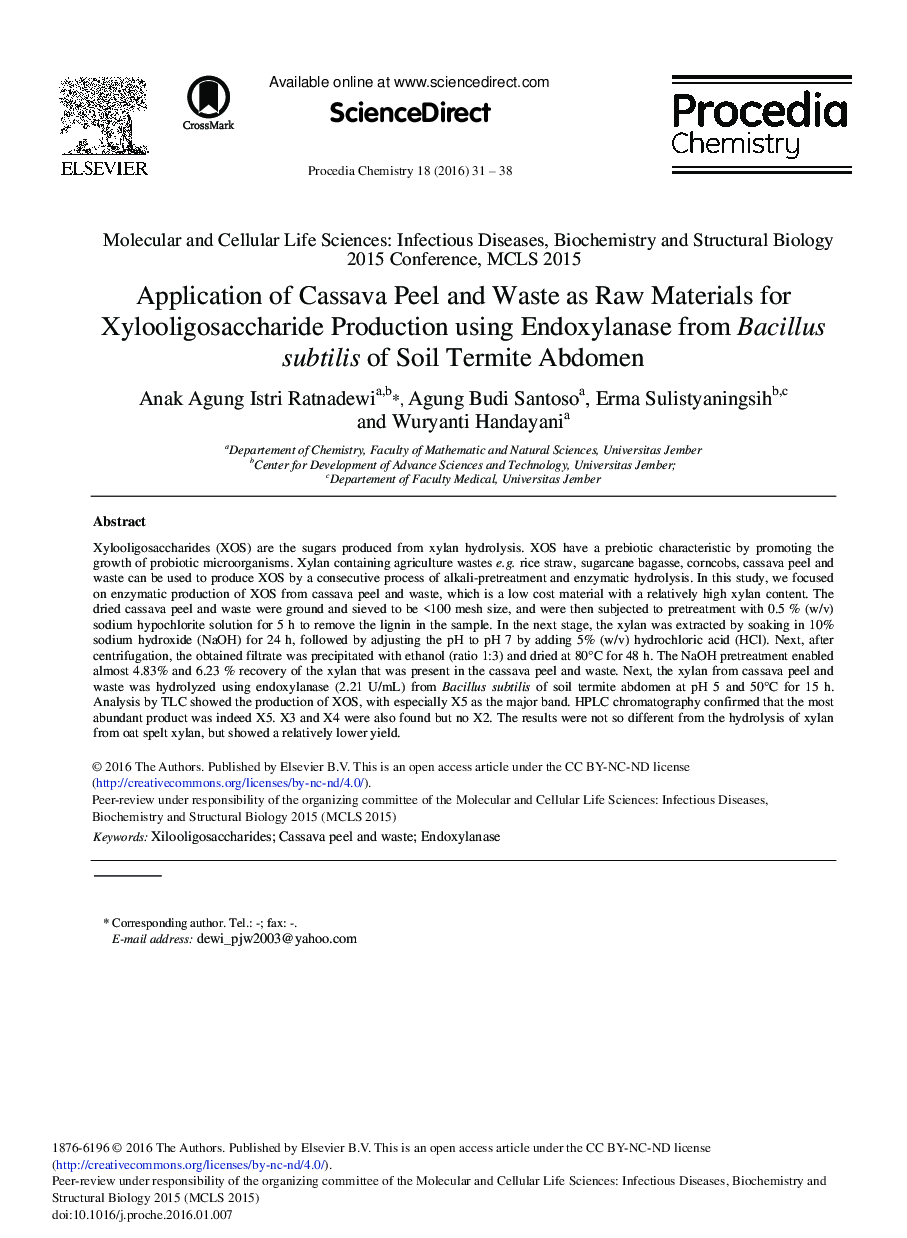| Article ID | Journal | Published Year | Pages | File Type |
|---|---|---|---|---|
| 239940 | Procedia Chemistry | 2016 | 8 Pages |
Xylooligosaccharides (XOS) are the sugars produced from xylan hydrolysis. XOS have a prebiotic characteristic by promoting the growth of probiotic microorganisms. Xylan containing agriculture wastes e.g. rice straw, sugarcane bagasse, corncobs, cassava peel and waste can be used to produce XOS by a consecutive process of alkali-pretreatment and enzymatic hydrolysis. In this study, we focused on enzymatic production of XOS from cassava peel and waste, which is a low cost material with a relatively high xylan content. The dried cassava peel and waste were ground and sieved to be <100 mesh size, and were then subjected to pretreatment with 0.5% (w/v) sodium hypochlorite solution for 5 h to remove the lignin in the sample. In the next stage, the xylan was extracted by soaking in 10% sodium hydroxide (NaOH) for 24 h, followed by adjusting the pH to pH 7 by adding 5% (w/v) hydrochloric acid (HCl). Next, after centrifugation, the obtained filtrate was precipitated with ethanol (ratio 1:3) and dried at 80 °C for 48 h. The NaOH pretreatment enabled almost 4.83% and 6.23% recovery of the xylan that was present in the cassava peel and waste. Next, the xylan from cassava peel and waste was hydrolyzed using endoxylanase (2.21 U/mL) from Bacillus subtilis of soil termite abdomen at pH 5 and 50 °C for 15 h. Analysis by TLC showed the production of XOS, with especially X5 as the major band. HPLC chromatography confirmed that the most abundant product was indeed X5. X3 and X4 were also found but no X2. The results were not so different from the hydrolysis of xylan from oat spelt xylan, but showed a relatively lower yield.
